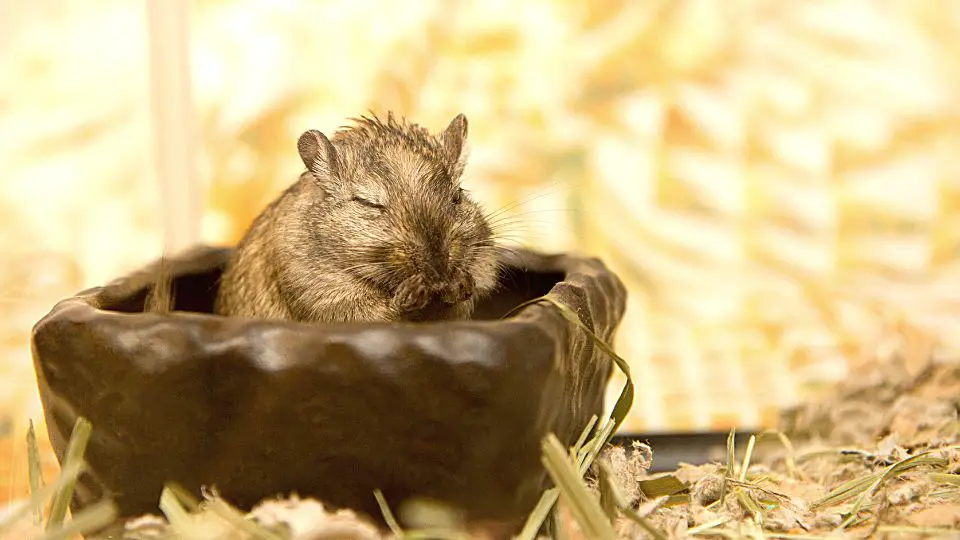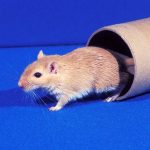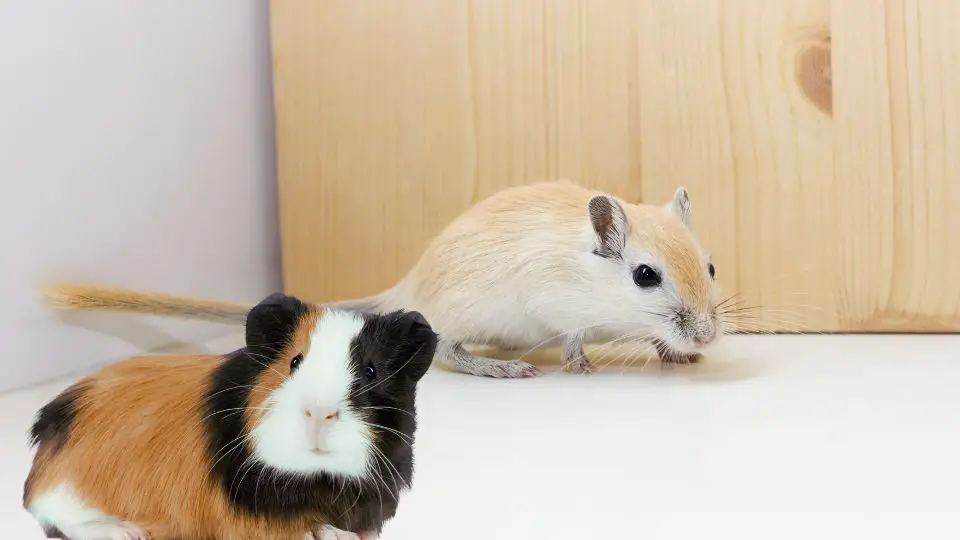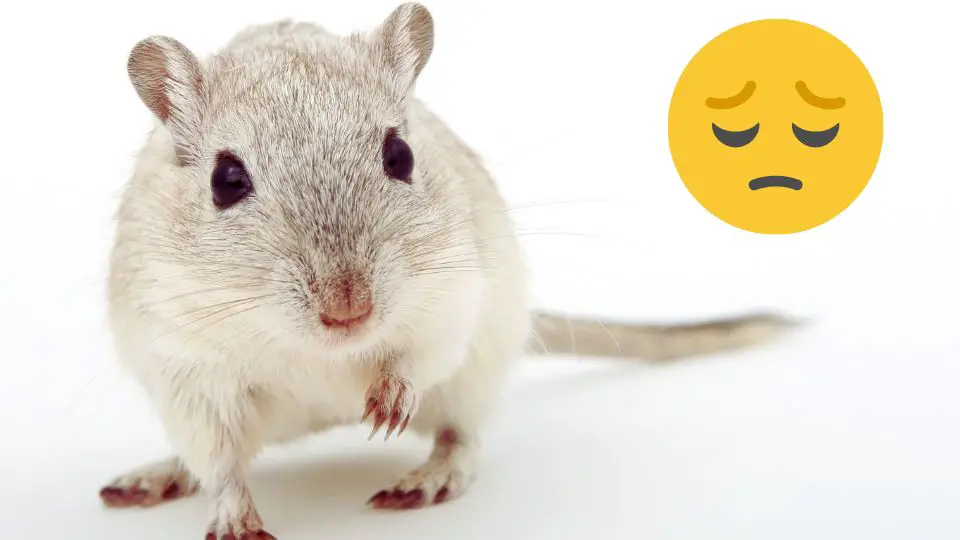Gerbils are cute and curious little pets that can bring a lot of joy to your home. However, as with any small animal, it’s important to gerbil-proof your home to keep them safe and healthy.
Gerbils are naturally curious and love to explore, so it’s essential to make sure that your home is free of any potential hazards.
In this article, we’ll go over some key steps to gerbil-proofing your home, including identifying and eliminating potential dangers such as toxic plants, securing loose wires and cords, and providing safe and appropriate living quarters.
Gerbil-Proofing the Cage
The size of the cage is important because it provides enough room for your gerbil to run around, hide, and play without feeling cramped or restricted. While wire cages are popular, these can be dangerous for small animals like gerbils because they can get their feet stuck in the wiring.
It’s better to opt for a plastic cage with solid walls and floors. Not only does this provide more protection from sharp edges, but it also makes it easier to keep clean.
Secure the Cage & Prevent Escape
Gerbils are great escape artists, so make sure their cage is securely locked at all times. Make sure there are no gaps or openings that could provide an escape route for your little buddy.
You should also pay close attention to any chewing or gnawing activity—gerbils have incredibly powerful jaws that can chew through almost anything!
Regular Maintenance & Cleaning
A gerbil needs regular maintenance and cleaning of their cage. Even if your gerbil’s cage seems clean on the surface, there could still be bacteria lurking in the nooks and crannies that could lead to health issues down the line.
It’s also important to check the cage daily for signs of damage or wear-and-tear—gerbils are active creatures who love to explore, so it’s not uncommon for them to chew through wires or push open doors or windows.
Gerbil-Proofing the Room
Gerbils have an innate curiosity about electrical cords, which can lead to serious injury or even death if they chew through one. Make sure all electric cords are tucked away safely, so they’re out of reach, or covered with a protective coating like plastic tubing or wire mesh.
Additionally, make sure all electrical sockets are safely covered with a plug cover when not in use.
Toxic Plants & Chemicals
Just as humans need to be careful around certain plants and chemicals, so do gerbils! Be sure that any plants or other items in the room where your gerbil lives are non-toxic and won’t cause harm if eaten (gerbils like to nibble on things!)
Toxic plants include:
- Poinsettia – This popular holiday plant can cause stomach irritation and vomiting in gerbils if ingested.
- Lilies – Lilies are highly toxic to gerbils and can cause kidney failure if ingested.
- Philodendron – Philodendrons contain calcium oxalate crystals that can cause irritation and burning in the mouth, throat, and stomach if ingested.
- Ivy – Ivy plants contain saponic glycosides that can cause stomach upset and irritation if ingested.
- Aloe Vera – Aloe vera plants contain anthraquinone glycosides that can cause diarrhea and vomiting if ingested.
- Pothos – Pothos plants contain calcium oxalate crystals that can cause irritation and burning in the mouth, throat, and stomach if ingested.
- Sago Palm – Sago palms contain sago cycads which are highly toxic to gerbils and can cause liver failure if ingested.
- Oleander – Oleanders contain oleandrin which is highly toxic to gerbils and can cause heart failure if ingested.
Food & Supplies Storage
We also remind you to store any toxic cleaning products or chemicals far away from the gerbil’s living space, preferably in a locked cabinet. This will help ensure that these items don’t accidentally end up in their mouth!
Try to store all food items and supplies for your gerbil in containers that have secure lids. This is especially important for food items as it prevents them from spoiling quickly and ensures that your gerbil doesn’t gain access without supervision (since some human foods can be dangerous for animals). Also, remember to regularly clean out the containers; this will help prevent mold growth and keep the area smelling fresh.
Gerbil-Proofing the Home
Gerbils love exploring and they will take any opportunity they can get to wander around the house. The first step in gerbil-proofing is checking for potential escape routes. Take a good look at all walls, floors, and furniture pieces in your home—especially near the gerbil’s cage—for any holes or gaps that could provide an easy escape route for your pet.
If there are any cracks or openings in the walls or floor that a gerbil could fit through, make sure to seal them up as soon as possible.
Prevent Escapes Through Windows & Doors
Windows and doors are another common source of escape routes for adventurous gerbils. Make sure that all windows are closed and securely locked when not in use, and check that all doorways have tight-fitting screens so that curious critters don’t try to sneak out when you open the door!
If you plan on taking your gerbil outside their cage, always keep an eye on them so they don’t wander off when you least expect it.
Complete to-do list to gerbil-proofing your home
Here is the complete list of things that you should keep in mind when gerbil-proofing your house:
- Securing loose wires and cords to prevent gnawing
- Covering or removing houseplants that are toxic to gerbils
- Installing childproof locks on doors and drawers to keep gerbils contained
- Providing a safe and secure exercise area, such as a playpen or exercise ball
- Keeping cleaning products, medications, and other hazardous materials out of reach
- Regularly inspecting the home for any small openings or holes that a gerbil could squeeze through
- Keeping food and water sources in a secure location to prevent spills or contamination
- Using a gerbil-safe bedding material, such as aspen or paper-based bedding, in the gerbil’s enclosure
- Providing plenty of toys and other enrichment items to keep gerbils mentally and physically stimulated
- Keeping an eye out for any signs of gnawing or chewing on furniture or other household items and addressing them promptly.
Conclusion
Gerbil-proofing your home is an important step to ensuring the safety and wellbeing of your pet. By following the steps outlined above, you can make sure that your gerbil stays safe, happy, and healthy in their living space. With a little effort and attention to detail, you can create an escape-proof environment for your curious companion. Thanks for taking the time to learn how to gerbil-proof your home!
By following these steps, you will be able to provide a safe and secure environment for your beloved gerbils. With proper care and attention, they will have plenty of opportunities to explore and play without any risk of harm or injury. All it takes is some simple preparation before bringing them home.







